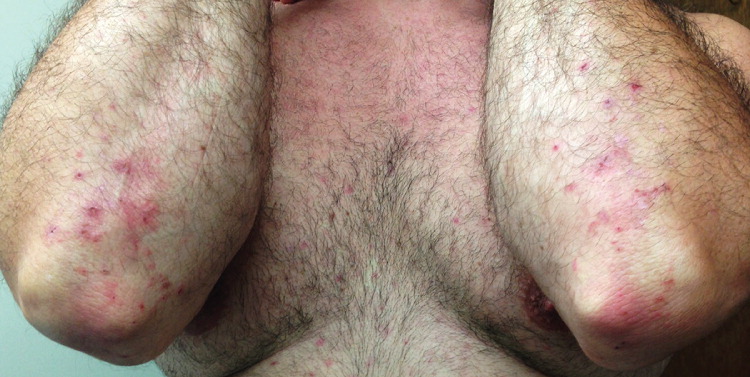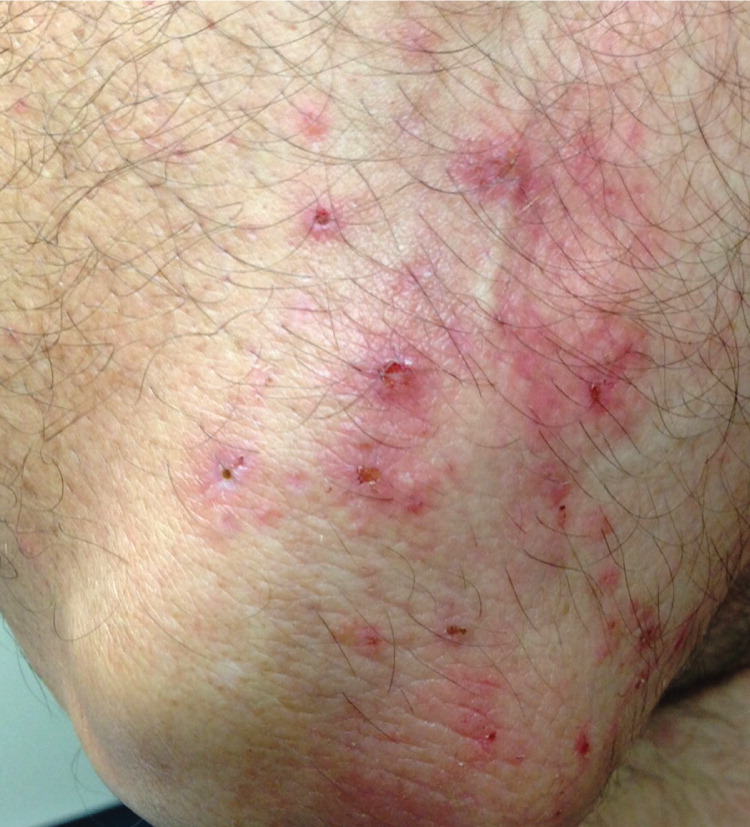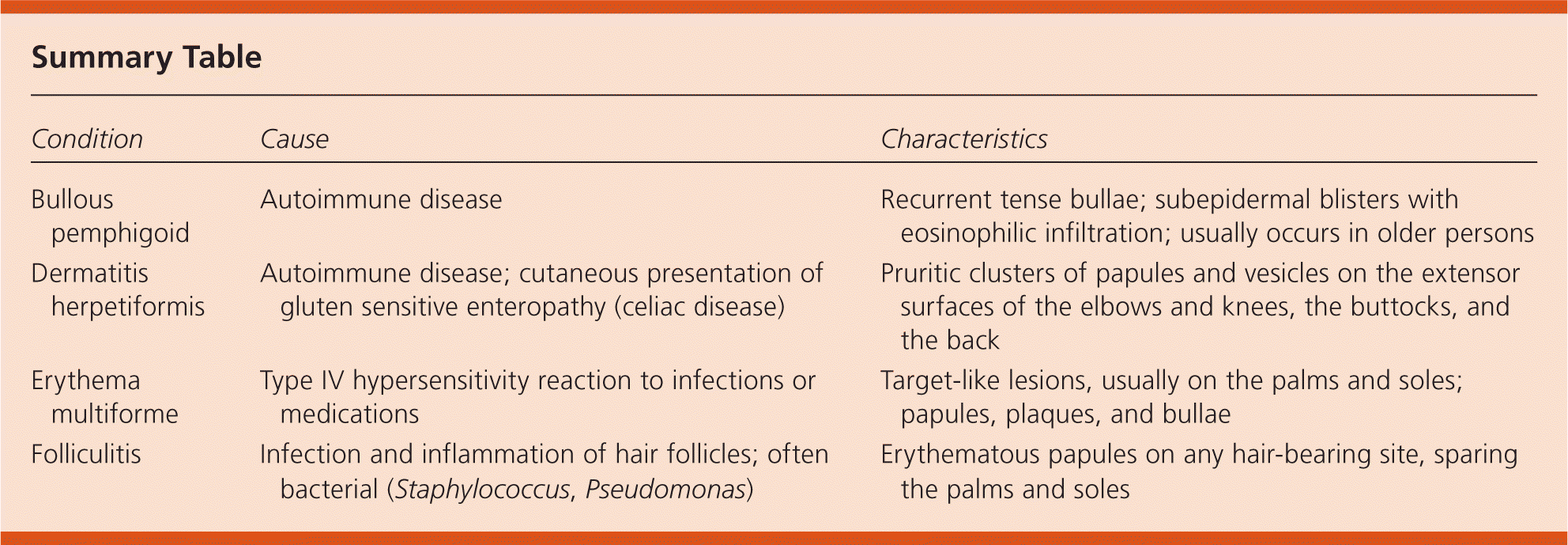
Am Fam Physician. 2014;90(6):407-408
Author disclosure: No relevant financial affiliations.
A 32-year-old man presented with a chronic rash on the extensor surface of his elbows and on his buttocks. Small pruritic skin bumps had been appearing on and off for several years. He also had episodes of alternating diarrhea and constipation for the previous six months. He had no recent travel or exposures to illness.


Question
Discussion
The answer is B: dermatitis herpetiformis. This autoimmune disease is the cutaneous presentation of gluten sensitive enteropathy (celiac disease).1 Dermatitis herpetiformis is characterized by pruritic clusters of papules and vesicles on the extensor surfaces of the elbows and knees, the buttocks, and the back. The primary lesions are often not seen because they are quickly excoriated. The pruritus can cause significant discomfort and insomnia. Histologic examination reveals neutrophilic microabscesses in the dermal papillae. A perilesional skin biopsy with direct immunofluorescence shows granular deposits of immunoglobulin A (IgA) in the upper papillary dermis. Avoidance of dietary gluten is the primary treatment, but it is a chronic disease that requires continuous monitoring and may take several months to improve.2 Dapsone can be used to treat the pruritus.
Bullous pemphigoid is an autoimmune blistering disease that most commonly affects older persons. It presents with tense bullae that can recur over months to years. Histologic examination shows subepidermal blisters with eosinophilic infiltration. The proinflammatory response is mediated by IgG and C3, which are linearly deposited along the dermoepidermal junction.3
Erythema multiforme is a self-limited, type IV hypersensitivity reaction that is usually secondary to medication use (e.g., penicillin, phenytoin [Dilantin], nonsteroidal anti-inflammatory drugs, sulfa drugs) or infection (e.g., herpes simplex virus, mycoplasma). It presents with target-like lesions, usually on the palms and soles, but it can also occur on the trunk. The lesions can be multiforme, with papules, plaques, and bullae.4
Folliculitis is a superficial infection and inflammation of hair follicles manifesting as erythematous papules. The eruption can be pruritic and occurs on any hair-bearing site, sparing the palms and soles. Staphylococcus and Pseudomonas infections are common causes.5

| Condition | Cause | Characteristics |
|---|---|---|
| Bullous pemphigoid | Autoimmune disease | Recurrent tense bullae; subepidermal blisters with eosinophilic infiltration; usually occurs in older persons |
| Dermatitis herpetiformis | Autoimmune disease; cutaneous presentation of gluten sensitive enteropathy (celiac disease) | Pruritic clusters of papules and vesicles on the extensor surfaces of the elbows and knees, the buttocks, and the back |
| Erythema multiforme | Type IV hypersensitivity reaction to infections or medications | Target-like lesions, usually on the palms and soles; papules, plaques, and bullae |
| Folliculitis | Infection and inflammation of hair follicles; often bacterial (Staphylococcus, Pseudomonas) | Erythematous papules on any hair-bearing site, sparing the palms and soles |
